SEARCH


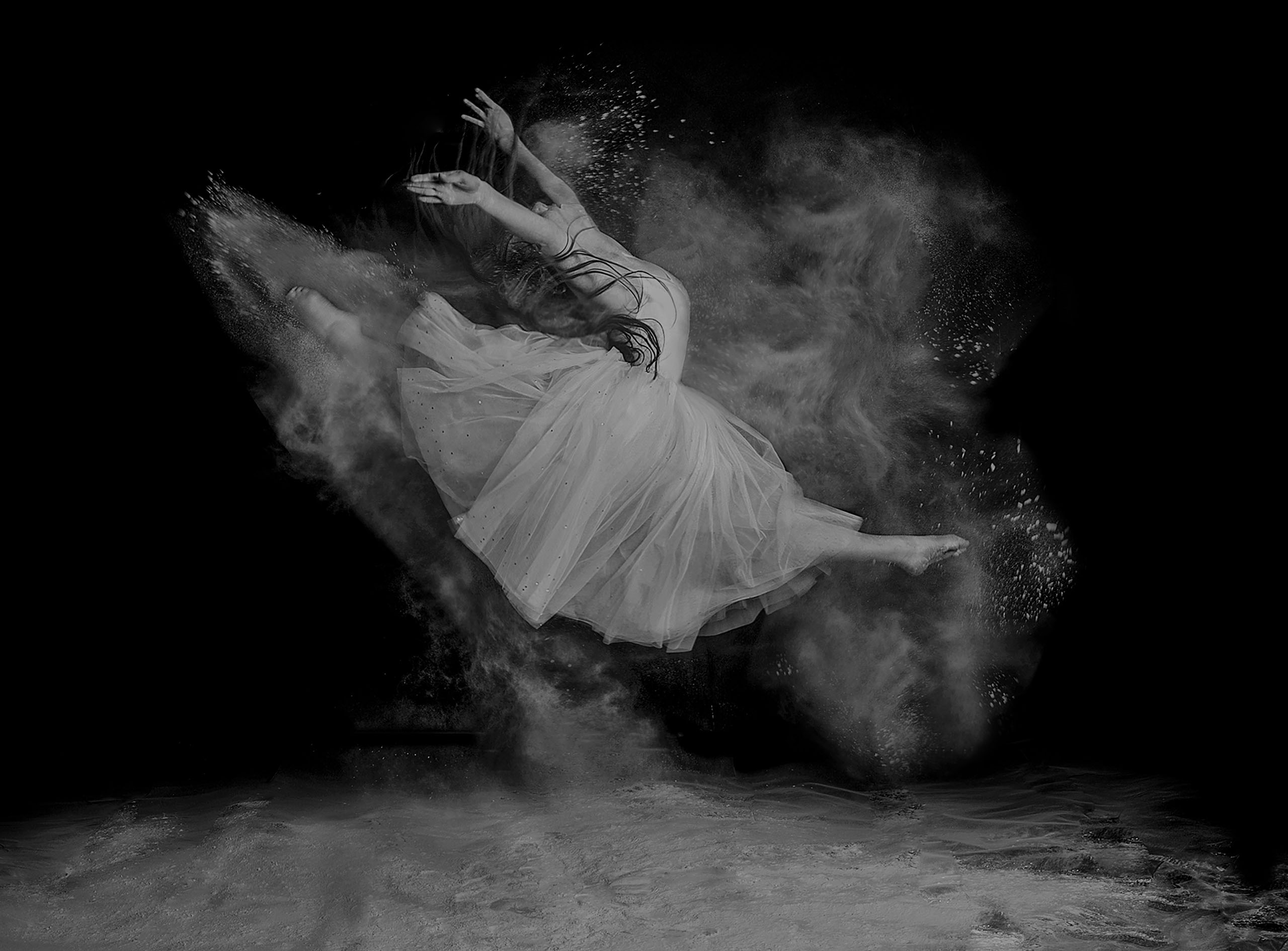

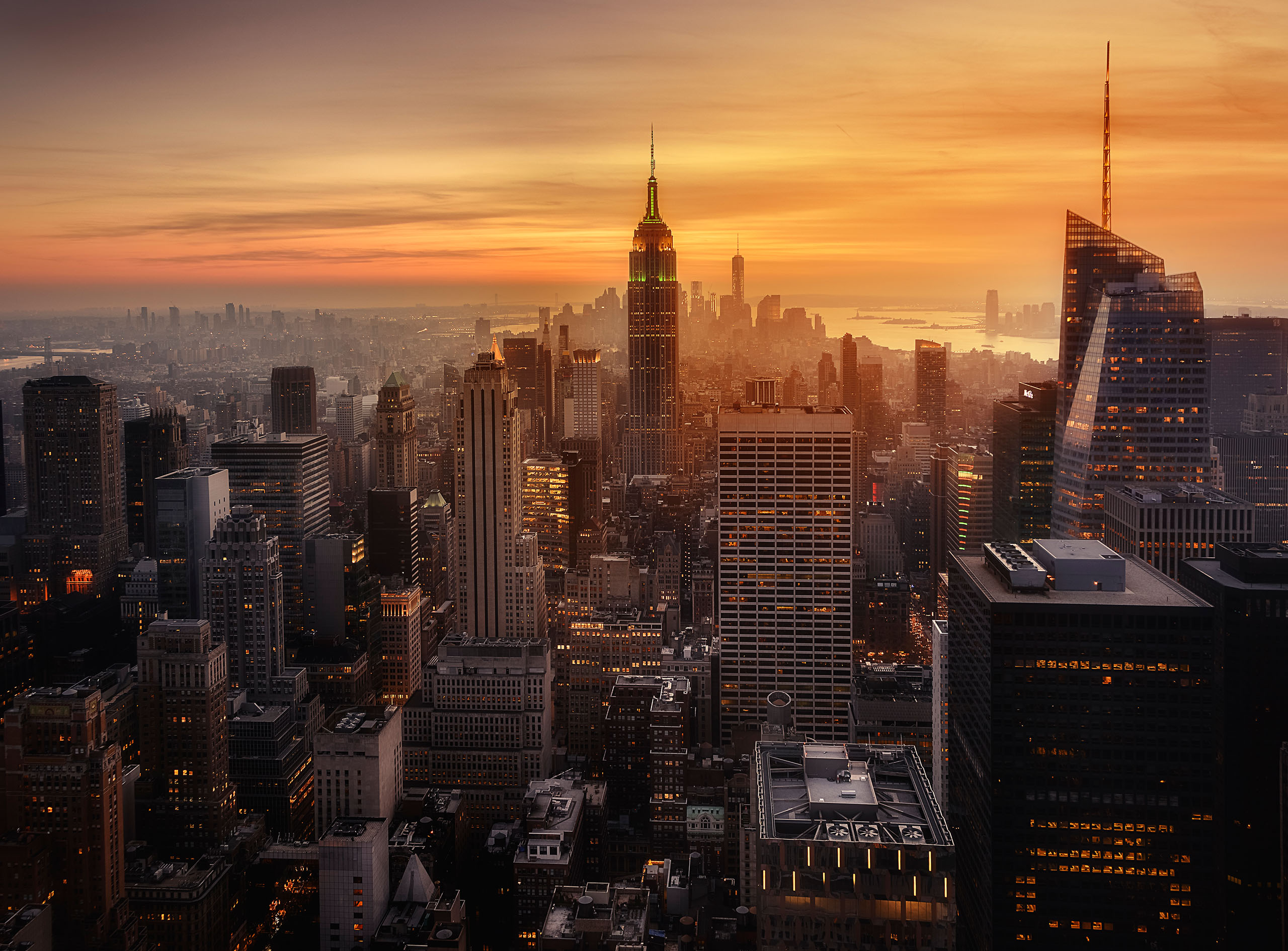
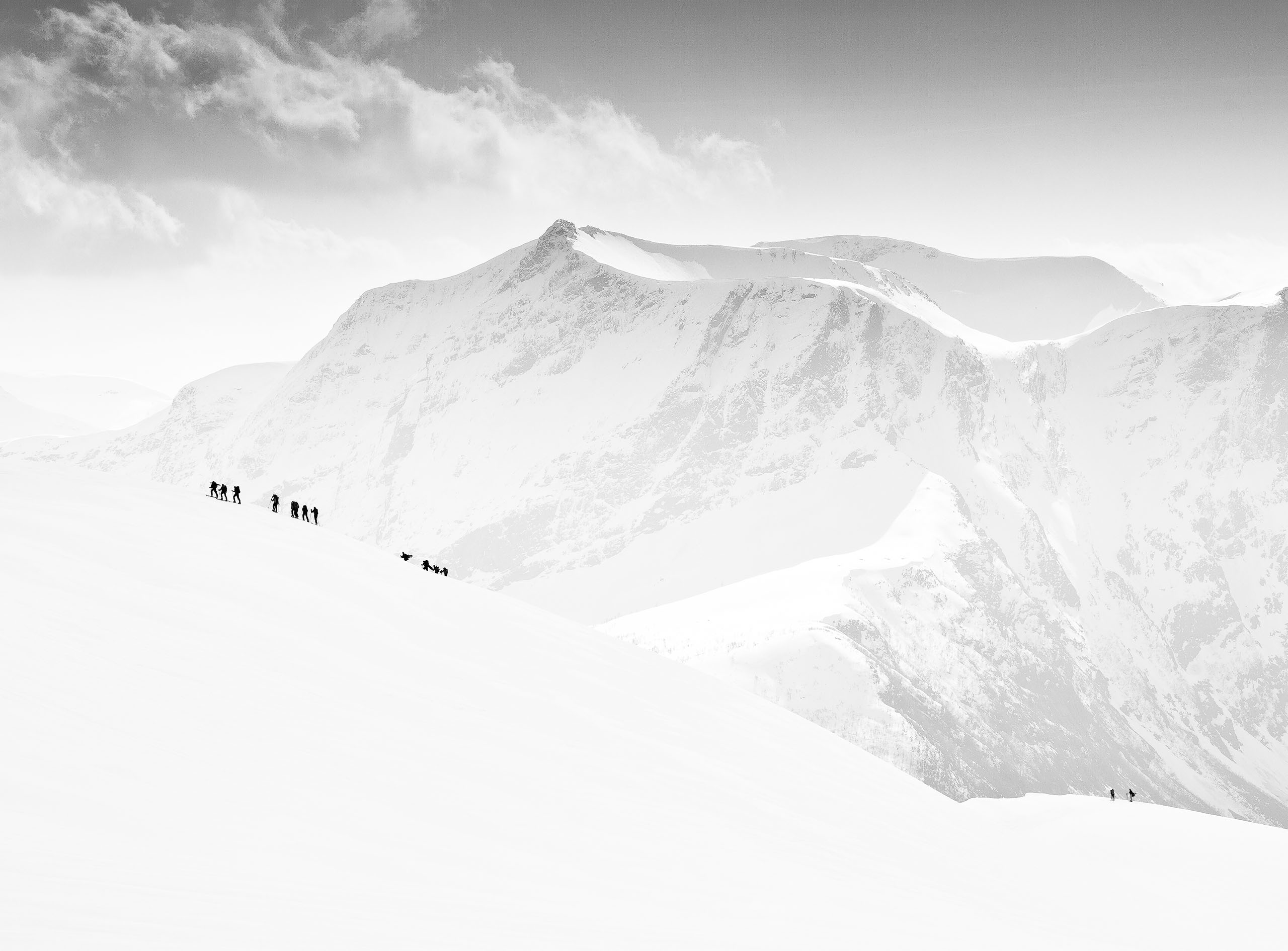
|
|
|
|


by Yvette Depaepe
Published the 10th of September 2025
'The Art of Dance in photography' was the challenge of the last contest.
Dance and photography is a perfect symbiosis of both art forms.
Elegant, energetic and dramatic dance photography is both a visual treat and a study of movement aiming to convey the spirit and skills of the dancers, showcasing their graceful gestures.
The winners with the most votes are:
1st place : Irene Wu
2nd place : Molly Fu
3rd place : Mia Meng
Congratulations to the winners and honourable mentions.
Thanks to all the participants in the contest 'The Art of Dance in photography'
The currently running theme is 'Compelling beach stories'
To photograph compelling beach stories, focus on capturing the interaction of light, subject, and environment, rather than just the scenery. Utilize the golden hour for soft, warm light and experiment with different angles, focal points, and shutter speeds to create dynamic and engaging images.
This contest will end on Sunday the 21st of September at midnight.
The sooner you upload your submission the more chance you have to gather the most votes.
If you haven't uploaded your photo yet, click here.
Good luck to all the participants.
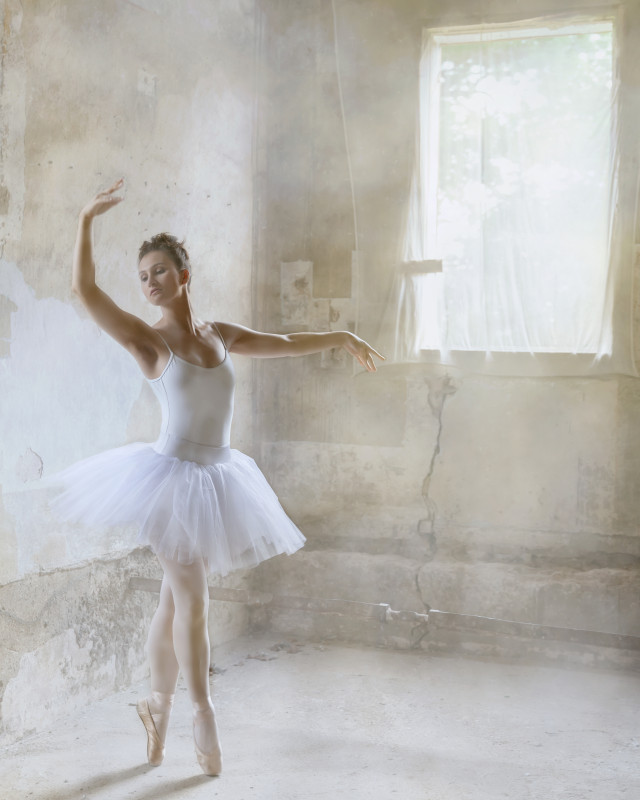 by Roswitha Schleicher-Schwartz
by Roswitha Schleicher-Schwartz
 | Write |
 | Yun Thwaits PRO Congrats to all! Thank you, dear Yvettee! |
 | Larry Deng PRO Congrats to all the winners!! Thanks dear Yvettee. |
 | Linda Lu PRO Congratulations! Beautiful work! |
 | Heiko Riekers PRO I like all top 10 photographs. Great Performance. Congratulations, especially to Irene Wu, who made the race. |
 | Piotr Leczkowski Amazing! I love all those pictures very much! <3 Congratulations!!! |
 | Caroline Bomers PRO Amazing artworks of dance. Congratulations! |
 | Francisco Villalpando PRO Excellent images, full of art!, congratulations! |
By Yvette Depaepe
Published the 8th of September 2025
Catherine Wang’s photographic vision centres on capturing a narrative within a single frame. Whether she is photographing still lifes, portraits, landscapes or animals, her aim is always to create a story that resonates beyond the surface. Read this interview to find out more about this talented artist.
Dear Catherine, first, I would like to thank you for taking the time to answer this questionnaire. To begin with, could you please introduce yourself briefly and tell us more about yourself, your hobbies and any other projects you are involved in?
Hi, I’m Catherine Wang. I live in the Washington, D.C. metropolitan area and work as a senior IT analyst for the government. Outside of work, one of my biggest passions is photography. I love exploring different styles and finding quiet moments of beauty in everyday life, whether it's a fleeting expression, subtle lighting or a still scene that tells a story.
When I'm not behind the camera, I enjoy immersing myself in a good book or recharging through daily workouts. Reading fuels my imagination and often sparks new creative ideas, while staying physically active helps me stay centred and focused.
For me, photography is a way of telling stories about everyday life, turning ordinary moments into something meaningful and artistic. It is through a rhythm of movement, reflection and curiosity that I continue to grow as both an artist and a person.
When and how did you start your photographic journey?
I had always been intrigued by photography, but my journey truly began in 2016 when I bought my first DSLR camera. I initially joined a parents' photography class to pass the time while waiting for my children to finish school. I didn't expect much from it — just a casual hobby. However, the moment I captured my first image through the camera's lens, I knew it was something special. I instantly fell in love with seeing the world through the art of photography.
Then, in 2020, my journey took a meaningful turn when the pandemic began. Working from home gave me more time to explore photography in greater depth. That same year, I had my first photo published on 1x, which was hugely encouraging. This boosted my confidence and from then on, my photography started to develop in a more focused and rewarding way.
For many of us photography is either a hobby or a way of life. How would you define your relationship with photography?
Photography started out as a simple way to pass the time, but over the years it has grown into a personal journey of reflection and growth. Every time I pick up my camera, I’m reminded of how much I’ve learnt, both technically and in terms of how I see, feel and connect with the world around me. I’ve progressed from taking casual snapshots to intentionally creating images that evoke emotion. Photography has taught me to slow down, stay curious and find meaning in everyday moments. It has become like a quiet companion — one that doesn't speak, but helps me express what words often cannot.
Which experience has influenced your approach to photography the most so far?
To be honest, discovering 1x.com was a real turning point in my photographic journey. As I mentioned earlier, in 2020, when the pandemic forced many of us to work from home, I suddenly found myself with more time to devote to photography. I started submitting my work to 1x, and the experience was a real challenge in a positive way. Every accepted image gave me a quiet sense of validation, and every rejection taught me something new. This laid a strong foundation for my development and gave me the confidence to pursue photography with greater purpose and passion.
'Phoenix Center, Beijing China’
You have your own style, but your work is very diverse. I see splendid dance photography, as well as photos of animals, landscapes, flowers and still lifes. Could you explain why this is?
I’m drawn to all forms of beauty, regardless of their subject or shape. To me, portraits, still lifes, architecture and landscapes all have one thing in common: they capture moments where light, composition and emotion come together to tell a story. The quiet expression in a portrait, the careful arrangement of objects in a still life or the way sunlight highlights the lines of a building all reveal something meaningful. Each genre provides a unique perspective on the world around me. Exploring different subjects challenges me to grow both technically and creatively, ensuring that my work remains fresh and inspiring. Ultimately, this diversity reflects my curiosity and my desire to understand life's many layers through photography.
What is more important to you, the mood,/story behind your images or the technical perfection?
While technical skill is important and helps to bring a vision to life, the mood and story behind an image always take precedence for me. Even a technically perfect photo can feel flat if it doesn’t evoke emotion or convey something meaningful. I believe that photography is about capturing moments that resonate, whether they are feelings, stories or connections. While technical mastery can support this goal, it's ultimately the story and mood that give an image its soul.
What generally is your relationship to your subject matter beyond being an observer?
Do you prepare carefully the locations where you are intending to photograph?
“To photograph is to appropriate the thing photographed” wrote Susan Sontag in On Photography, and this quote reminds me to be mindful of the power behind the lens. I’m not merely observing; I’m interpreting, selecting what to include and what to exclude. This responsibility makes me approach my subjects with care and humility. When photographing people in particular, I try to create space for something genuine to emerge. Ultimately, I want the image to reflect not just what I saw, but also the moment we shared.
Yes, I prepare shooting locations, but not in a rigid way. I often choose locations that carry visual or emotional meaning, and consider how the environment can support the story I want to tell. Light, texture and atmosphere are important to me. However, I also allow for spontaneity — some of my favourite images have emerged from unexpected moments or details that I hadn't planned for. So it’s a balance. I prepare with intention, but I also stay open to what the location offers in the moment.
Describe your overall photographic vision.
My photographic vision centres on telling a story within a single frame. Whether I'm photographing still lifes, portraits, landscapes or animals, I aim to create a story that resonates beyond the surface. I carefully design each story by selecting the right location, props and outfits — especially for portraits — to bring out the desired character and mood. When it comes to still lifes, I arrange objects in ways that mirror human relationships or social themes, breathing life and meaning into them. Every detail within the frame plays a role in shaping the story, so I thoughtfully consider composition, lighting and atmosphere. Ultimately, I strive to create images that capture a moment and evoke emotion, inviting viewers to engage deeply with the story being told.
Can you please tell us something more about your workflow from the idea to the final product?
My workflow usually begins with an idea or feeling that I want to explore, which is often inspired by a story, book or painting that captures my imagination. I then research and plan, choosing locations and considering lighting and props. For portraits, I discuss outfits and moods with my subjects. Although preparation is important, I also stay flexible and open to whatever unfolds on the day of the shoot.
During the shoot, I focus on creating a relaxed and comfortable atmosphere to allow natural moments to emerge. I pay close attention to light and composition, but also watch out for unexpected details or emotions that add depth to the story. Afterwards, I carefully select the images that best convey the desired feeling or narrative.
During post-production, I use Photoshop to enhance the photo. I often experiment with different colour tones to stay true to the moment while making the image visually engaging. Sometimes, I take it a step further by adding abstract shapes, dreamy backgrounds or vivid colours to create striking and unique visuals.
Where do you look to find inspiration and what inspires you the most?
I often look for inspiration online—platforms like PhotoVogue, Pinterest, and Instagram expose me to a wide range of creative voices and visual styles from around the world. But just as often, inspiration comes from everyday life: a passage in a book, a line from a poem, the way light hits a wall, or a quiet moment between people.
What inspires me most is the hidden story behind a scene—the emotion or tension that isn’t immediately visible but can be felt. I’m drawn to subtle moments that say something real, and I enjoy building that into an image, whether through composition, light, or symbolism. For me, inspiration is less about grand ideas and more about noticing small things that carry meaning.
Many are of the opinion that the gear is not very important when the passion for photography is strong. However, can you please share with us what gear you use (camera, lenses, lighting, tripod, etc.)?
I agree that passion, creativity, and a strong eye for storytelling matter more than gear alone—but having the right tools definitely helps bring your vision to life. I currently use the Sony a7R V mirrorless camera, which I love for its sharp resolution, fast autofocus, and ability to handle a wide range of lighting situations.
For portraits, my go-to lens is the 50mm f/1.2—it gives beautiful depth of field and natural-looking compression. When I’m shooting other types of work, like still life, travel, or environmental scenes, I rely on the 24–70mm f/2.8 for its versatility and sharpness. I keep lighting simple—mostly natural light when possible, sometimes with a reflector or soft LED panel for subtle fill. I also use a lightweight tripod when I need more control with composition or long exposures.
At the end of the day, I see gear as a support system—tools that help translate a feeling or idea into an image. But it’s the vision behind the lens that matters most.
What would be your favourite photo? Please tell us the story behind it.
My favorite photo is "Spring Melody" a high-key still life image I created during the pandemic. At that time, like many others, I was confined at home—isolated from friends and missing the small joys of daily life. It was a beautiful summer day, and I longed to photograph fresh flowers. A close friend, knowing this, invited me to visit her garden. Because of the restrictions, she didn’t come out to greet me—instead, she left a pair of garden gloves, scissors, and an empty basket by her front door, along with a quiet gesture of trust and kindness.
I picked a few blooms and later arranged them into the composition that became Spring Melody. To others, it may just be a delicate still life—but to me, it holds a memory of hope, connection, and a friendship that quietly bloomed during one of the most difficult times. It's a reminder that even when the world paused, beauty and care still found a way to grow. (P.S. This photo is my #1 seller.)
Who are your favourite photographers or mentors whose works have influenced you and your photography?
Many photographers have inspired me at different stages of my journey. I admire Mandy Disher for the beautiful detail in her still life compositions and Annie Leibovitz for the emotional depth and storytelling in her portraits. I’m also drawn to Irving Penn's poetic, carefully constructed images, which seamlessly blend fashion, still life, and fine art. Recently, I have also found inspiration in the work of contemporary photographers on platforms such as PhotoVogue, who tell personal, cultural and emotional stories with honesty and creativity.
Although I don’t have a formal mentor, I have learned a great deal by studying the work of others, exchanging ideas with close friends, reading and continually experimenting. Inspiration comes not only from the great masters, but also from everyday photographers who quietly convey powerful and meaningful stories through their images.
Now, since we have almost reached the end of this interview, I would kindly ask you to share with us your plans or photographic projects you would like to be involved in.
I don't usually set myself long-term goals. Instead, I focus on short-term projects that inspire and encourage my creativity in the moment. Currently, I am working on a photo series inspired by PhotoVogue’s global open call, 'Women by Women'. The project celebrates women through the eyes of other women, a concept with which I deeply resonate.
I plan to expand this work by photographing more everyday women from diverse backgrounds, cultures, ages and life experiences, creating a larger series dedicated entirely to women. I’ve titled this project 'Her Story'. Through it, I hope to highlight the unique journeys and quiet strength of ordinary women and give voice to stories that are often overlooked. It’s my way of connecting with, celebrating and honouring women’s lives through photography.
The photo below, 'The Gap', won me the Alpha Female Award, Overall Winner at the 2024 Sony World Photography Awards.
This recognition has given me even more strength and motivation to continue with this project for as long as possible.
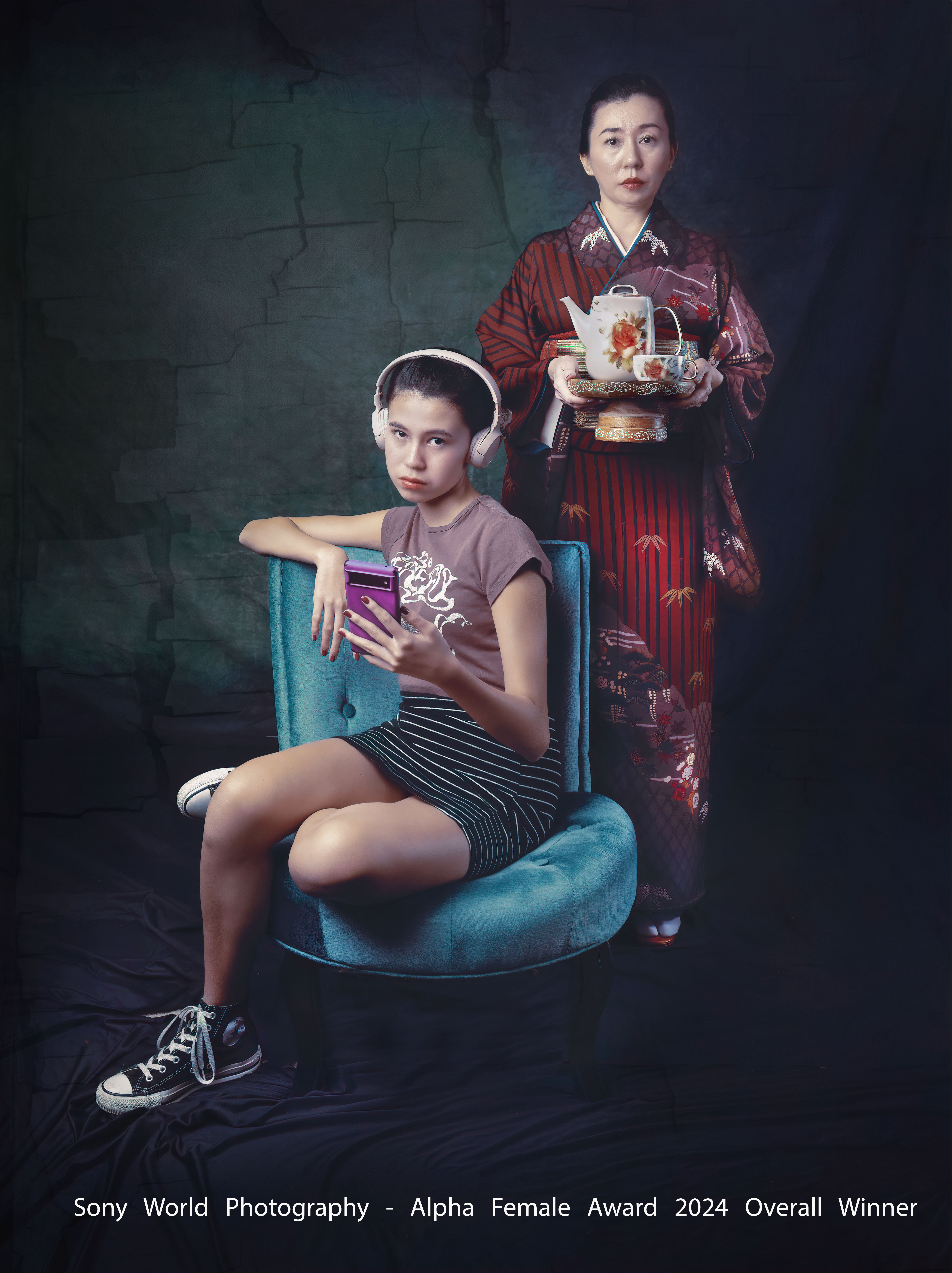
Is there anything else you wish to add and what do you think about 1X as a home base for your work?
I’d like to add that, for me, photography is a continuous journey of learning and connection. Every project and subject teaches me something new, both technically and in terms of how I understand people, emotions and the world around me. I’m grateful for the opportunity to share these stories, and I hope that my images will encourage others to pause, reflect and connect with one another on a deeper level.
As for 1X, it truly feels like home. As I mentioned earlier, joining 1X marked a turning point in my photographic journey. It has challenged me to grow, refined my vision and broadened my understanding of photography as an art form. I deeply value the thoughtful curation and the global community of photographers who are passionate about quality and storytelling. Being part of the 1X community continues to inspire me to push myself creatively, stay curious and evolve.
Thank you so much for inviting me to this interview. I am very grateful for the opportunity to share my thoughts and journey. It means a lot to be part of a platform that supports and uplifts photographers from around the world. I am honoured and thankful to be included.
 |
 | Linda Lu PRO Congratulations! Beautiful work! |
 | Catherine Wang PRO Thank you very much! |
 | Angelika Vogel PRO Catherine, your portfolio of photos on various topics is amazing! I love your style, your unique, outstanding compositions and colours! Congratulations |
 | Catherine Wang PRO Thank you so much! |
 | Excellent and interesting interview ! Stunning work, Catherine ! My compliments !!! |
 | Catherine Wang PRO thank you very much for your comments. |
 | Dianne Mao PRO Great work and excellent interview, Catherine! Looking forward to hear more from Her Vision. |
 | Catherine Wang PRO Thank you very much, Dianne. |
 | Sean Huang PRO These richly diverse and exquisite creations are truly captivating in every category—congratulations! |
 | Catherine Wang PRO Thank you very much, Sean. |
 | Raceala Elena PRO Wonderful work and great interview!! Congratulations!! |
 | Catherine Wang PRO Thank you very much! |
 | Bill X. Liu PRO I am so impressed with every image shown in this interview. Great art works! |
 | Catherine Wang PRO Thank you very much, Bill! |
 | Pedro Uranga PRO Thank you for the interesting interview and for this series of beautiful, inpiring images. Congratulations Catherine |
 | Catherine Wang PRO Thank you very much! |
 | Dazhi Cen PRO Enjoying these group of diversified, master pieces. |
 | Catherine Wang PRO Thank you very much! |
 | Gary Perlow PRO This is a magnificent group of images. I am inspired when I see your work. |
 | Catherine Wang PRO Thank you very much! Gary! |
 | Rana Jabeen PRO Dear Catherine..it's inspiring to see your wonderful portfolio..every image is amazing! My compliments for the excellent interview ....Thank you Yvette :) |
 | Yvette Depaepe CREW Thanks for your appreciation, Rana ;-) |
 | Catherine Wang PRO Thank you very much! Rana. |
 | Miro Susta CREW Outstanding work of photography, please accept my congratulations, dear Catherine. Very interesting interview, Yvette, thank you very much. |
 | Yvette Depaepe CREW My pleasure, Miro! |
 | Catherine Wang PRO Thank you very much! |
 | Izabella Végh PRO Bellissimo articolo. Le fotografie sono poesia. |
 | Catherine Wang PRO Thank you very much! |
 | Elaine Henshaw PRO Your photography is beautiful, and inspiring. Thank you for sharing. |
 | Catherine Wang PRO Thank you very much! |
 | Chao Feng 天馬 PRO Your work is truely artful. Thanks for sharing and congratulations! |
 | Catherine Wang PRO Thank you very much! Chao Feng! |
 | Subhajit Das PRO Great work. Congratulations! |
 | Catherine Wang PRO Thank you very much! |
 | Calvin Feng PRO Congratulations, Catherine! Really amazing work! |
 | Catherine Wang PRO Thank you very much! |
 | Yongming Zhang PRO Huge congrats, Catherine! Your talent inspires us all — can’t wait to see what’s next! |
 | Catherine Wang PRO Thank you so much, Yongming! |
 | Kathryn King PRO Beautiful photographs! |
 | Catherine Wang PRO Thank you! |
 | Yun Thwaits PRO Amazing artworks! Congratulations! |
 | Catherine Wang PRO Thank you very much! Dear Yun! |
 | Yanyan Gong PRO Congratulations, dear Catherine! Your outstanding photos are a reflection of your creativity and artistic cultivation. I have truly enjoyed this inspiring magazine! Thank you very much, Yvette, for this great interview! |
 | Catherine Wang PRO Thank you so much, appreciate it! |
 | Yvette Depaepe CREW Thanks for your appreciation, Yanyan ... |
 | Nichole Chen PRO Congratulations, Catherine! 🎉 Your achievement is truly remarkable, and you as a photographer is an inspiration — so happy for you and excited to see what comes next. |
 | Catherine Wang PRO Thank you very much. Dear Nichole ! |
 | 大山 儀高 PRO 素晴らしい作品、素晴らしい発想力と、それを表現する技術。感動しました。おめでとうございます。インタビューもありがとうございます。 |
 | Catherine Wang PRO Thank you very much! |
 | Eiji Yamamoto PRO Thank you so much for this wonderful and interesting interview with great photos! It's very inspiring!! |
 | Catherine Wang PRO Thank you so much! |
 | Mei Xu PRO Impressed by all of your excellent images. Expecting more. |
 | Catherine Wang PRO Thank you so much, dear Mei! |
 | Songhu Yan PRO Congratulations on your outstanding work! Thank you for sharing your story and the stunning images. They are truly inspirational!
|
 | Catherine Wang PRO Thank you very much! |
 | Hua Tang PRO Congratulations! Your amazing work is an inspiration to everyone around you. |
 | Catherine Wang PRO Thank you very much, dear Hua! |
 | Sonya Liu PRO Congratulations for your excellent work! It’s amazing . Thanks Yvette for the great interview. |
 | Catherine Wang PRO Thank you very much, dear Sonya! |
 | Yvette Depaepe CREW Thank you so much for your appreciation, Sonya ... |
 | Jacob (Jian) Xu CREW Congratulations on your outstanding work! Thank you for sharing your story and the stunning images. They are truly inspirational! |
 | Catherine Wang PRO Thank you very much! |
 | Molly Fu PRO Always enjoy to look at all your art pieces, congrats Catherine, you are well deserved!!! Thanks Yvette for this wonderful interview, love to read! |
 | Catherine Wang PRO Thank you very much, dear Molly!
|
 | Yvette Depaepe CREW Thanbks for your neverlasting appreciation, Molly ;-) |
 | Catherine Wang PRO Thank you 1x.com for this wonderful interview, and a special thanks to Yvette for her thoughtful guidance. Looking back on my photography journey, each photograph has been a stepping stone—marking growth, capturing perception, and shaping understanding. I am deeply grateful for the guidance of mentors and the companionship of friends, whose support has made every challenge meaningful. I hope that sharing this journey may inspire others to see, feel, and create through their own lens, finding both insight and joy along the way. Thank you all! |
 | Summer2016 PRO Congratulations on you wonderful work. |
 | Catherine Wang PRO Thank you very much! |
 | John Fan CREW Congratulations! Great works! |
 | Catherine Wang PRO Thank you so much! |
 | Li Chen PRO My friend Cathrine, I’ve always admired your artistic creations and beautiful style, as well as the powerful stories beyond your art. You are a role model for my learning! Congratulations! Thanks to Yvette for the great interview! |
 | Catherine Wang PRO Thank you so much ,my dear friend! |
 | Yvette Depaepe CREW Thanks for your appreciation, dear Li Chen ... |
 | Louie Luo PRO Congratulations on your well-deserved interview, Catherine! Many of your stunning photos truly impressed me with your creative composition, execution, and presentation.
Many thanks to Yvette as well for conducting such a great interview. |
 | Catherine Wang PRO Thank you very much, Louie! |
 | Yvette Depaepe CREW Thank you for your appreciation, dear Louie ... |
 | Linda Lu PRO Congratulations! Creative and beautiful images, very inspiring. Thanks Yvette for another great interview. |
 | Catherine Wang PRO Thank you very much! |
 | Yvette Depaepe CREW Thanks for your appreciation, Linda |
 | Ruiqing P. PRO Congratulations, my dear friend Catherine! Your interview beautifully reflects the excellence and creativity of your photographic work. I truly admire how your vision—just as you said, “it’s the vision behind the lens that matters most”—is the key to your success. Your images go far beyond photographs; they are powerful stories that touch and inspire. |
 | Catherine Wang PRO Thank you so much, my dearest friend ! |
 | Ben.C.L PRO Great images |
 | Catherine Wang PRO Thank you very much! |
 | JUNKO TORIKAI PRO I am so moved by your wonderful work. It makes me feel a bit dazed and I almost hate my own work... I can't express it well, but thank you. |
 | Catherine Wang PRO Thank you very much! |
by Editor Miro Susta
Edited and published by Yvette Depaepe, the 5th of September 2025
'I don't want to be at the mercy of my emotions. I want to use them, enjoy them, and control them.'
This is a quote from Oscar Wilde, an Irish dramatist, prose writer, poet and essayist.
We all experience emotions, but sometimes we don't realise it, or we can't identify what we're feeling. Many philosophers, psychologists and doctors have developed theories on how to identify and categorise emotions. Thanks to them, we now understand how emotions arise.
Many animals and even birds, not to mention humans, experience emotions. Often, humans are unaware of this, or are unable to accurately identify what they are feeling. This expresses itself differently in other living beings.
According to psychologists and natural scientists, emotions have existed since the dawn of humanity. However, some emotions only developed later. It is important to note, however, that emotions are not feelings. Modern psychology divides emotions according to stimulus and origin.
Emotions are reactions to situations or stimuli that hold a particular significance for the individual. They arise from the action of chemicals produced by the brain in certain situations.
Unlike emotions, feelings are shaped by thoughts about those emotions. Feelings are a way of explaining the emotions experienced.
Although emotions cannot easily be controlled or suppressed, they can be transferred to other living beings, even if they have not experienced the situation themselves. This phenomenon is caused by emotional intimacy, which enables people to empathise with others' feelings.
This complex psychological phenomenon can have positive or negative effects. It manifests itself not only through physiological reactions, such as an accelerated heartbeat, but also through behavioural reactions, such as facial expressions, gestures and changes in tone of voice.
There are many different emotions in the world, and everyone experiences a different range of emotions throughout their life. This is why it is difficult, even for psychologists, to define emotions precisely. However, after extensive research, scientists have identified five basic emotions from which all other emotions subsequently derive.
The most well-known theory identified the following primary emotions, which are related not only to humans, but also to the instincts of animals and birds, with various degrees of intensity: Joy, grief, fear, anger and surprise
JOY
Joy and happiness are important emotions in the lives of all living creatures. It is associated with a sense of well-being and can be defined as inner contentment and peace.
In human life, joy can be evoked by memories, experiences or success. This positive emotion motivates us and helps us to overcome difficult situations.
Depending on its intensity, joy can manifest as a smile, laughter, a cry of joy or an action. Joy is an important emotion for humans, animals and birds.
GRIEF
Grief and sadness are basic human and animal emotions. It can be triggered by the loss of a loved one, failure or disappointment, for example.
Grief is a natural part of life for humans and animals, who can experience this basic emotion to varying degrees of intensity, ranging from mild discomfort to devastating pain.
Grief can manifest itself differently in everyone. Common symptoms include crying, speaking in a sad tone, preferring to be alone, and changes in sleep and eating habits.
FEAR
Fear is an important emotion for humans, animals and birds, designed to protect them from danger. It alerts them to danger and encourages them to resolve the situation. While it is therefore a very important emotion, constantly experiencing fear can also lead to serious physical and mental health issues.
Fear can manifest as shortness of breath, a racing heart, caution, anxiety, changes in eating habits, sweating, trembling and crying. Experiencing such symptoms constantly significantly reduces quality of life.
ANGER
Anger can be expressed through facial expressions, voice and sounds, or even body language indicating preparation for a fight. Anger can motivate individuals to make changes in their lives. It is important for people to find healthy ways to express anger, to prevent it from causing harm to themselves or others.
SURPRISE
Surprise is a basic emotion that is short-lived and caused by experiencing an unexpected situation. Unlike other emotions, surprise can be either positive or negative. It can manifest as an increase in adrenaline and other stress hormones.
Animals may use surprise as a defence mechanism against predators; however, predators may also exploit surprise to their advantage.
Secondary emotions -hope, pride, excitement, uncertainty, panic, resentment, hatred, envy, jealousy, nervousness, shame, neglect, depression, guilt, isolation, shock, dismay, confusion, helplessness- are usually experienced after the primary emotion has already been sensed. They are reactions to the primary emotions and are often routine or learned responses.
Finally, here are a few selected quotes on the topic of emotions.
"Jealousy, like grief, is one of the emotions that can be described as normal."
Sigmund Freud (1856–1939), Austrian physician, psychoanalyst, and psychologist
"The oldest and strongest emotion of mankind is fear, and the oldest and strongest kind of fear is fear of the unknown."
Howard Phillips Lovecraft (1890–1937), American author.
"I don't think there is any greater excitement than that which an innovator experiences when he feels within himself some creation of the mind that will lead to success... Thanks to these emotions, a man forgets about food, sleep, friends, love, everything."
Nikola Tesla (1856–1943), inventor, physicist, and electrical engineer.
"Love is not an emotion or an instinct. It is an art."
Mae West (1893–1980), American actress.
"Emotion is the thing that carries you away."
Carl Gustav Jung (1875–1961), Swiss psychiatrist and psychotherapist.
www.mrsphoto.net
[email protected]
 |
 | Excellent article and stunning pictures ! Thanks a lot Yvette and Miro !!! |
 | Miro Susta CREW Thank you very much for your wonderful words of encouragement dear Gian Corrado |
 | Fantastic! Unique motifes you presentes. Images in the upper layer |
 | Miro Susta CREW Thank you very much dear Jostein. |
 | daniel demunter PRO Thank you Miro Susta and Yvette ! Such an honour one of my pics was chosen to be part of the article. |
 | Miro Susta CREW You're most welcome dear Daniel |
 | An excellent article with striking images. Thank you so much for sharing.
|
 | Miro Susta CREW Many thanks for nice words of praise dear Montserrat |
 | Incantevole, bellissimo articolo. Un tema profondo, che la fotografia lontana da artifici tecnici, può ben rappresentare. Complimenti |
 | Miro Susta CREW Muchas gracias Enzo |
 | Colin Dixon CREW Great article and an amazing selection of wonderful images. |
 | Miro Susta CREW Thank you very much dear Colin, happy to see that you like it |
 | Extraordinario |
 | Miro Susta CREW Muchas gracias Eduardo |
 | Eiji Yamamoto PRO Thank you so much for this wonderful and emotional article with great photos! It's very inspiring! |
 | Miro Susta CREW Many thanks for your nice words of encouragement dear Eiji |
 | Afzal Khan PRO Wonderful set of images and great write up explaining emotions. Well done! |
 | Miro Susta CREW Thank you very much Afzal, glad to see that you like it |
 | The photos recreate the magazine's title very well. Congratulations. |
 | Miro Susta CREW Thank you very much for wonderful words of encouragement |
 | Dazhi Cen PRO Wonderful catching! |
 | Miro Susta CREW Thank you Dazhi |
 | Julien Oncete PRO Thank you so much! It is a great honour for me too!Kind regards! |
 | Miro Susta CREW You're most welcome Julian |
 | Ali Khataw CREW Thank you Yvette! Such an honor. Much appreciated! |
 | Miro Susta CREW You most welcome Ali |
 | Raghuvamsh Chavali CREW Awesome! to be featured in this article such an honour! :) Huge kudos to all the artists for the incredible visuals! All the best.. |
 | Miro Susta CREW Many thanks for your praise in name of all artist |
 | Subhajit Das PRO Thank you so much. It is a great honour for me. Great article and images. Best Regards! |
 | Miro Susta CREW Many thanks Subhajit |
 | Izak Katz PRO Great images !! .
|
 | Miro Susta CREW Thank you very much |
by Yvette Depaepe
Published the 3rd of September 2025
This months' featured exhibition is titled 'Wearing Time - Portraits of Tranquility in Kimono' by Uryutalk
I invite you to explore this magnificent Japanese fashion show.
This exhibition which will be exposed on our opening page / Gallery throughout September 2025.
Click here to see the entire exhibition: https://1x.com/uryutalk/japanese-tradition-by-uryutalk
To trigger your curiousity, here is a short selection of images out of this exhibition.
 |
 | 大山 儀高 PRO どの作品も素晴らしく、表現が豊かで「和の美」を感じます。おめでとうございます。 |
 | Gila Koller PRO Wonderful portraits wearing the beautiful Japanese Kimono, very nice light and color. |
 | Dazhi Cen PRO Very gracefully. |
 | Subanya Baskar PRO Great beautiful Japanese kimono portrait series. |
 | Ineke Mighorst PRO This is so nice. The feeling is mysterious for me. Calming as well. Great work, congratulations. Uryutalk-san. A visit to Japan is on my wish list. |
 | Sherry Huang PRO Very nice, great light and color with blur background. |
 | LILY PHOTOGRAPHY PRO Congrats! Uryutalk-san.
Great beautiful Japanese kimono portrait series. |
 | Uryutalk PRO Thank you, Lily-san. |
 | Rana Jabeen PRO Absolutely wonderful series of images...beautifully presented..congratulations Uryutalk |
 | Uryutalk PRO Thank you, Rana san. I truly appreciate your support, and it means a lot to me that you enjoyed the series. |
by Mikhaliuk Siarhei (iconnn)
Edited and published by Yvette Depaepe, the 1st of September 2024
Photography is no longer about objects. It’s about you.
In classical photography, the camera is a tool for control and documentation, operating through the sense of vision.
In Fluxism, however, the camera becomes a conductor of feelings and the body, a means of visualizing what is usually invisible: your sensations and states. It becomes a medium for merging the author and the surrounding world.
This change occurred unexpectedly, like a quiet whisper: my camera ceased to be what it had always been considered and created for. It renounced its duty to document the world.
It refused to serve vision alone, opening its sensors to the flow emanating from the entire body and awakening the senses. Instead of capturing visual images, it captured vibrations: the hum of the city absorbed by the skin; the chill of the wind on the nape of the neck; the thick, honeyed scent of the blooming linden trees.
The camera unveiled its mirror, in which these subtle signals of sensation were refracted as they reached towards the light.
And in this ritual, in this meditation, something astonishing occurs. The person holding the camera inevitably turns their gaze inward. In order to allow the camera to become the body’s conductor, the focus must be shifted away from the horizon or composition and onto the delicate layers of one’s own organism that usually remain beyond attention: the rhythm of breathing, muscle relaxation and tension, the sensation of the feet on the ground and how the spine responds to movement. This focus is not an intellectual effort but a plunge into sensation. The entire process becomes a reflection, a silence and a meditation.
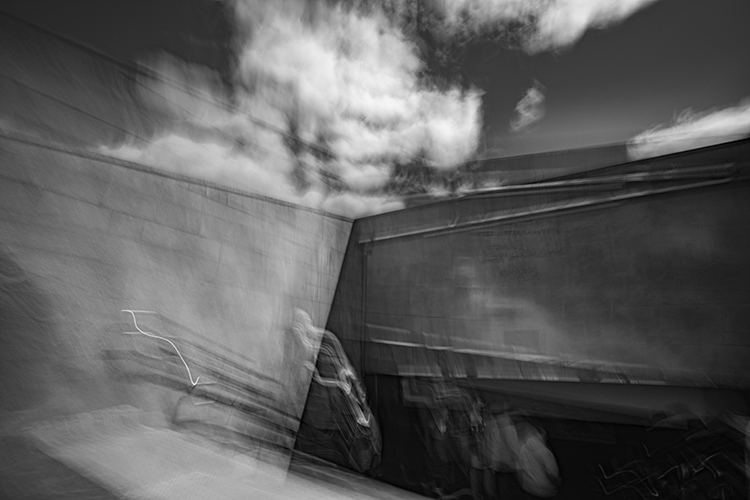
by Siarhei Mikhaliuk
And that’s not all!
Another miracle unfolds when we look at the screen later. What we see defies ordinary description. It is neither a landscape, a portrait nor a still life in the traditional sense. Instead, we see the visual form of our own sensations — the very vibrations that filled us at the moment of capture.
Our encounter with the world — its light and movement, its unpredictable matter — has given our invisible, ephemeral feelings a tangible form. They have materialised as whimsical blurs of light, uneven streaks of motion and abstract patterns that seem chaotic yet eerily familiar.
Not everything we see on our screens will be worthy of note, but some of it will be undeniably beautiful. Perhaps one or two frames will reveal new interconnections of forms and lines, rhythm and structure — calculated not by logic, but by the living perception of a new reality. These rare shots are like flashes of insight where chance reveals a harmony that is hidden from the eyes, but open to the heart. Chaos momentarily coalesces into a clear, yet inexplicable, pattern.
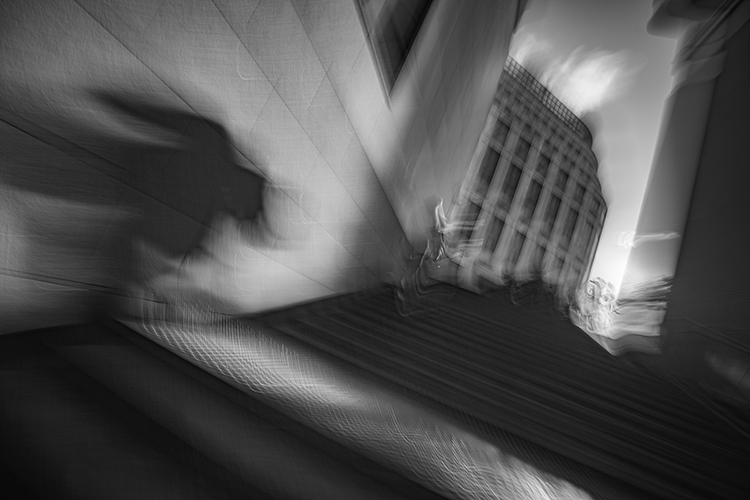 by Siarhei Mikhaliuk
by Siarhei Mikhaliuk
This image is unique and cannot be repeated. This image is your mark on the universe.
And so, Fluxism was born.
Fluxism. The Inner Landscape.
Recognizing your inner landscape in an external image is an incredible feeling. It draws you back and compels you to pick up the camera again and again, not to capture something specific, but to observe your reactions and responses to the world through this unique visual poetry of sensations in the here and now. On the screen, a trace appears. Not the footprint of a single moment, but the imprint of an entire stream of inner states, left in the very fabric of reality.
The Process of Photography. How It Works.
Imagine space as dense and solid, like the Earth. The body moving through this space leaves a trajectory, relying not on sight, but on touch, hearing, intuition and trust in the flow — like a mole tunneling through the universe. Every movement, touch and breath leaves an invisible yet real imprint on this dense medium, creating a unique form of interaction woven from light and shadow.
In Fluxism, the camera, with its light-sensitive elements, translates these invisible paths onto the screen. It reveals the traces of movement and contact between your entire being and the outside world. On the screen, you do not see objects, but rather the echo of an encounter: a visualization of how your inner state resonated with the space at that unique, irreplaceable moment.
Not beautiful, but true. From control to trust.
Such a manifestation is only possible under one condition: when the mind momentarily steps aside. When control — that eternal overseer obscuring raw feeling — weakens. It is when the door to trust opens: trust in your sensations, trust in the body holding the camera and trust in the unpredictability of light and motion. It is when you allow the world to enter you and yourself to dissolve into the flow without trying to seize or freeze it. It is only in this openness, in this temporary surrender to chaos, that the alchemy occurs and sensations take visible form.
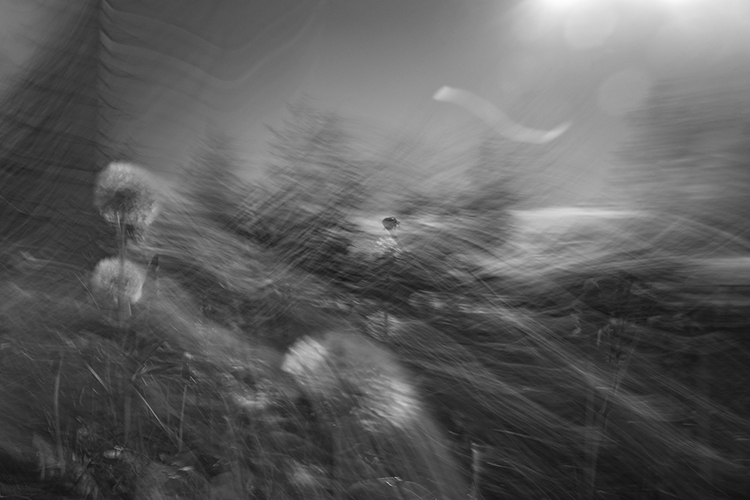 by Siarhei Mikhaliuk
by Siarhei MikhaliukHow do you see your feelings? Not as an abstraction, but literally and visibly? The answer lies not in psychology, but in this strange interplay of body, light, trust and chance. Transformed into a transmitter of sensations, the camera becomes the key to Fluxism.
On the Path of Impressions. How?
How do you capture the impressions of a journey, rather than just souvenir pictures of mountains, waterfalls or buildings?
How do you capture not the architecture of a monument, but how it made you feel, how it resonated within you — its scale and grandeur?
How do you photograph not just sand dunes, but also the sense of detachment you feel in the desert and the tremor in your legs as you stand on the edge of a cliff?
How do you capture the movements of a dancer or footballer and the invisible traces that their energy leaves in space — their emotion embodied in motion and speed? How do you capture the echo of a dance and the vibrations in the air that you could feel on your skin as you left the theatre?
The answer to all these questions lies not in technique, settings or rules. It lies in the paradoxical transformation of the camera from a tool for external documentation to a mirror of the internal world. It lies in the act of Fluxism. This is a wondrous, almost mystical process in which your most intimate, wordless sensations meet the chaos of light and space and suddenly take form before you on the screen — mysterious, elusive, yet undeniably yours.
In that moment, photography ceases to be about the object. It becomes about you. It becomes about your unique and irreplicable way of feeling and being in the world. This is the mirror. The mirror of your sensations.
 by Siarhei Mikhaliuk
by Siarhei Mikhaliuk
Fluxism. Why Not Sooner?
Historical Context as the Key
Photography has been moving toward this moment for 200 years, like a river toward a waterfall.
The analogue era (19th–20th centuries): The struggle for recognition as an art form (emulating painting → documentation → 'the decisive moment'). Technique was limited by light, film and chance. Control was the holy grail.
The Digital Revolution (1990s–2020s): Technical perfection became accessible. Control became total with the advent of Photoshop, autofocus and burst shooting. Perfectionism triumphed.
The AI Era (2020s–present): Algorithms surpassed humans in creating 'perfect' images. Control and perfectionism were devalued. A vacuum emerged: 'Why humans if AI does it better?'
Fluxism is the answer to this crisis. It did not arise in spite of photography's history, but as its logical conclusion. Only now have two things become possible:
- Technical: Digital cameras allow experimentation with chance, such as high ISO, long handheld exposures and instant review.
- Philosophical: Algorithms have revealed a core human value: the ability to engage in spontaneous, bodily and unpredictable dialogue with chaos.
Intuitively, photographers have long moved away from mere documentation, experimenting with infrared cameras, pinholes, Vaseline on glass and more, while always maintaining visual control over the process. Fluxism highlights the importance of consciously abandoning compositional focus during the shooting process, ensuring that these methods become expressions of sensation and intuition rather than mere artistic tricks.
Fluxism Opens Possibilities for People with Visual Impairments.
In Fluxism, light is not just for the retina, but for the whole body.
Fluxism broadens the traditional concept of photography, demonstrating that seeing is not merely looking. Like a martial artist who hones their intuition and reflexes with their eyes closed, the Fluxist photographer relinquishes visual control in order to:
Immerse themselves in the flow and create images that transcend templates. Heightened perception without reliance on sight means sensitivity to light, movement, air temperature and spatial vibrations intensifies.
Neuroscience explores this phenomenon. Research shows that, in blind individuals, the brain rewires itself to enhance other senses and re-purpose the visual cortex to process non-visual information.
One such scientist is Amir Amedi of Harvard Medical School.
Key discoveries: The visual cortex in blind individuals does not lie dormant, but instead processes sound and tactile signals (cross-modal plasticity).
The blind can "see" through sound (echolocation, like bats).
Fluxism is alchemy where you allow light to heal the body.
Fluxism as Meditation.
Fluxism is not just an artistic method, but also a unique state of perception akin to a meditative trance. Modern neuroscience confirms that when consciousness releases control, the brain operates differently.
Studies by Richard Davidson (Center for Healthy Minds, University of Wisconsin–Madison) and others demonstrate that deep meditation results in:
Brainwave patterns shift, with increased gamma activity being linked to clarity and presence.
Activity in the 'default mode network' (DMN), which is responsible for inner dialogue and analysis, weakens.
Sensory perception intensifies and the connection between emotion and action becomes stronger.
Fluxism harnesses this state — not to think, but to feel. Not to construct a frame, but to allow it to form naturally. When the photographer relinquishes rational control, bodily memory, intuition and spontaneity take centre stage.
Meditation transcends the mind and control without negating them. In an era where AI can mimic any aesthetic, this approach may offer a solution: art that cannot be replicated by algorithms because its source is the elusive living moment.
For the Fluxist photographer, unique opportunities arise in both the photographic process and self-exploration.
Fluxism is meditation for those who do not sit in the lotus position, but who move with a camera.
It is enlightenment through aesthetics, not renunciation.
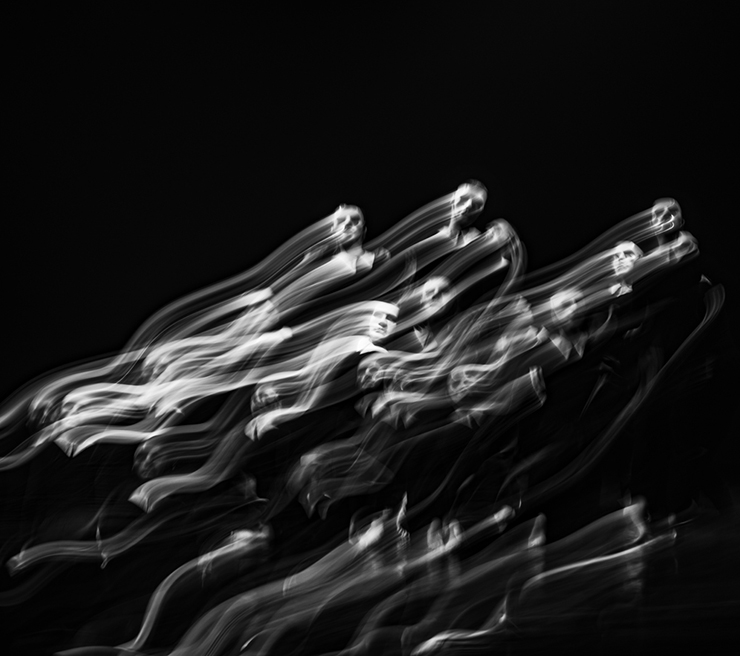 by Siarhei Mikhaliuk
by Siarhei Mikhaliuk
Experience and result.
Many photographers have experienced moments when an 'unexpected accident' has influenced a shot, such as slipping or stumbling, or fogged glass. Is this coincidence? Upon review, something profound (or even miraculous) is often discovered in that frame.
The idea of art as a 'tool' of awareness has been discussed before by scientists, philosophers and artists.
Fluxism does not create something from nothing; it is the logical continuation of the centuries-long search for art, but for the first time it unifies what previously existed in fragments:
- Meditative spontaneity (as in Zen calligraphy).
Bodily rhythm (as in expressive dance).
- The philosophy of non-control (as in Dadaist acts).
- the alchemy of light (as in the early experiments of the photo-avant-garde).
This is synthesis, not eclecticism — where the camera finally ceases to be an 'eye' for vision and becomes a resonator of the whole human being.
What was once the serendipitous discovery of individual artists becomes, through Fluxism, a holistic method — an answer to the age of algorithms.

by Siarhei Mikhaliuk
Camera for Fluxism
The modern camera is not yet suitable for Fluxism. Over 200 years of evolution have seen photographic cameras retain their brick-like form, which remains adapted for visual control. Features such as fast and precise auto-focus, lens and sensor stabilization and tripods are designed to neutralize the photographer's influence on the final image.
However, Fluxism requires the opposite approach: there must be no separation between the camera and the photographer, and duality must be rejected in both philosophical and physical senses. The camera must read information from the body while allowing the body to feel the camera itself — this is crucial! It should become an extension of the photographer's body, just as a sword becomes an extension of a fencer's arm.
This could be a camera bracelet, glove, sphere, or flexible module — something that is perceived as part of the body rather than a foreign object. During shooting, the camera must become an extension of the hand, chest, back or leg.
Prototypes: 'Wearable Cameras' from the MIT Media Lab. These are not designed for wearing comfort, but for enhanced tactility.
Although AI algorithms can replicate "eye-centric" photography perfectly, they remain powerless against the chaos of a living body.
Man and Art.
Personally, I believe that Fluxism in photography has helped to redefine the values and goals of art, where the pinnacle of the pyramid is no longer the artwork itself, but the human being. Art is an act that leads to the rebirth of the individual.
All content described in this article is based on personal experience and perception.
The author of the article and founder of the "Fluxism" movement in photography: belarusian photographer, choreographer and artist Siarhei Mikhaliuk.
Some images from 1x photographers with similar aestretics as fluxism.
 |
 | Dazhi Cen PRO Motion+ abstract. Dreamy. |
 | Yaping Zhang PRO 非常感谢各位老师分享精彩文章和抽象奇妙,震撼人心的有趣作品。尽情享受了一场视觉盛宴。 |
 | Gabriela Pantu PRO Such an inspiring article, great content and wonderful seductive images.Thank you so much dear Siarhei and dear Yvette for the effort, it’s really a treat. |
 | I would like to thank 1x.com, the Editor-in-Chief of the magazine, Yvette Depaepe, and congratulate all of us.
This is a new window of opportunities for both photographers and those interested in self-discovery. The camera as a tool for exploring consciousness.
I have come a long way in my personal development, and I value 1x.com as a high-level photography space.
Almost all the photographs presented in this article were taken blindly.
We are preparing an immersive interdisciplinary exhibition in this direction, uniting art, philosophy, and science, as well as a film and a book presentation.
We live in an amazing time. |
 | Subhajit Das PRO Very interesting article. Very inspiring. Thank you so much! |
 | Interesante |
 | Eiji Yamamoto PRO Thank you so much for a very interesting and inspiring article!! |
 | My respect |